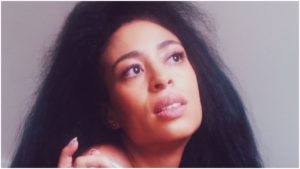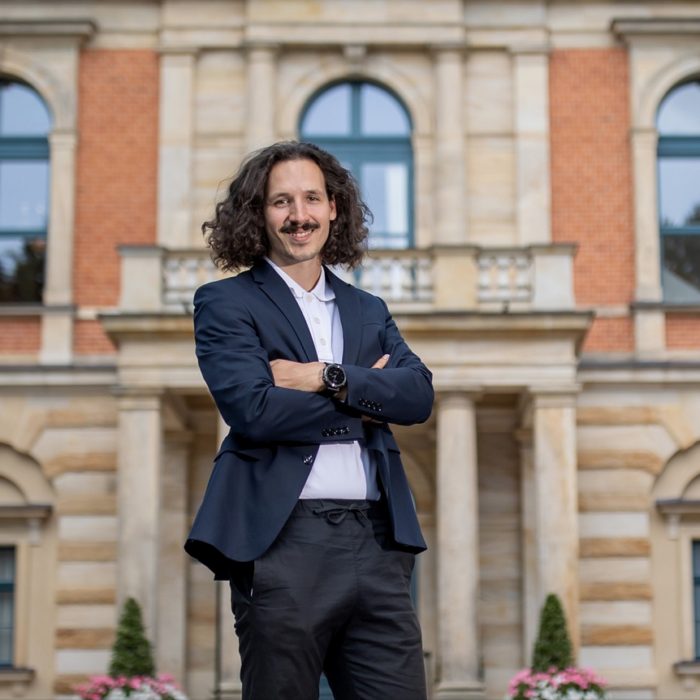
Q & A: Candice Hoyes on ‘Tom-Tom,’ Caramoor & Finding Her Voice
By Francisco SalazarOn July 9, the Caramoor Festival will present a Livestream event entitled “Listening to Tom-Tom.”
The event will be an in-depth exploration of Shirley Graham Du Bois’ opera, “Tom-Tom,” the first opera written and staged by an African American woman. The work has not been produced since its initial run in 1932 and all that survives of the score is an incomplete piano-vocal reduction.
Soprano Candice Hoyes will be among the participants in the live stream. Hoyes is an acclaimed jazz and classical soprano who has performed at Jazz at Lincoln Center, NYC JazzFest, Nublu JazzFest, the Public Theater, and the Blue Note.
OperaWire had a chance to speak with the soprano on her exploration of “Tom-Tom” and participation in Caramoor’s event.
OperaWire: How did you get involved in the project?
Candice Hoyes: I have a passion for recovering rare works and telling forgotten stories so this is a good fit! I am always drawing upon musical legacy while making my own space. I was also a young artist for two summers in Caramoor’s former Bel Canto festival, so returning is meaningful to me.
In 2015, I released an album called “On a Turquoise Cloud” where I stepped into the role of both producer and soprano, self-funded, using archival research to release rare vocal works written by Duke Ellington for Black sopranos who were prohibited from ascending in the classical milieu. These soprano singers, including Adelaide Hall and Kay Davis, were contemporaries of Shirley Graham DuBois. I have taken that work to Jazz at Lincoln Center, TED, and the Detroit Symphony.
I seek out inspiring artists like Shirley Graham DuBois so that I can push myself to redefine my music and ensure I am always growing.
OW: Tell me about Shirley Graham Du Bois’s music and the sound of it?
CH: She expresses herself using an array of American musical styles. She takes on both slavery and modernity in this piece. She takes on intergenerational gender roles. The main theme I glean from “Tom-Tom” is “what did it feel like to be a Black voice of dissent?” This is not some vague reference to American freedom and living in harmony, and these are not platitudes of a fearful person. I hear political and social theory. Graham alternates between archetypes, folk religion, and symbolism, and using the well-worn hymns and spirituals passed down by Paul Robeson and Adele Addison.
Graham is a first, best, and only, as you consider her biracial life, political and artistic leadership, post-graduate work, citizenships in Ghana and Tanzania, motherhood, and partnership with W.E.B. DuBois. Her questions are great questions for today. As arts presenters and keepers of the tradition, can we tell operatic stories of bare, unpopular truths?
OW: This is the first opera written by a Black woman to be performed by a major company. As a Black woman, what does it mean for you to perform her music?
CH: Shirley Graham’s music is a conversation between many traditions to which she belongs. I’m always working on my art form in the same spirit.
This July, I will release a new single called “Zora’s Moon.” The song is an ode to Black girlhood inspired by Zora Neale Hurston. I perform, write, and record my music to create a living monument to my personal story, to the experiences I carry.
Only Shirley Graham DuBois could have told this story in this way, and in another sense, the opera world did not embrace her, and she had to create it of her own resources. I want my albums to be on Spotify so that everyone has access to it for all time. I do want people to follow me, yet I’m not waiting for the industry to endorse me before I can create.
OW: This work was originally supposed to play at the Caramoor Festival but due to the coronavirus, it won’t. Do you think having a live stream of it gives the work an opportunity for more audience members to hear and discover it?
CH: The live stream creates a wonderful possibility for audiences to share this music and the programs at Caramoor with the click of a link, and that is just sensational. I think Leonard Cohen said we need the cracks in things so the light can enter. I know how much we love to gather ’round at Caramoor, and this summer is different so I hope you gather around your table with a bottle of wine and play this through your speakers.
Just as importantly, we care about your voice and your opinions. I hope the live stream is a celebration where you want to know us better, respond, and ask for more of the programming you desire.
OW: Tell me about the challenges of the piece and how it fits into your voice?
CH: I would say the tessitura is middle to low, comfortable for either soprano or mezzo, and it does not sit in the extreme vocal ranges. I feel that this is a manuscript rather than a work that has been performed many times in my lifetime. “On a Turquoise Cloud” also featured vocal works I had never seen performed live, so that isn’t shocking for me. For example, in some places, I’m not sure if Graham DuBois intended the music to be played straight or swung, tempi, sets, and costume choices, and I’m at peace with that. The challenge is not about vocalism or music, but rather the confidence in my choices.
OW: Can you tell me about the characters you portray in this work?
CH: For this concert presentation, I am singing both the Mother and the Girl, and that is an option that makes presenting a rare work more compact. I rather like this as I started to think that every Mother is a Girl. It has led me to imagine the conversations between these two characters and their distinct perspectives.
OW: All that exists is an incomplete vocal-piano score. What parts of the work are missing and was any of the soprano’s music that you are performing incomplete?
CH: Our ensemble is presenting excerpts that provide a broader storyline, themes, and style. I don’t know all the components that are missing, but we shared the complete libretto so we can have that dramatic context. Graham employs such a breath of styles, so there is a great deal for me to interpret.
OW: Tell me about your collaboration with Kyle Walker.
CH: Kyle is an expressive and versatile pianist in performance, and I love to meet other artists who are independent. This is our first time performing together. In this rehearsal process, we have approached the work by researching and sharing our discoveries with each other. I’m excited to feel where this performance takes us.
OW: What can audiences expect from this live stream performance?
CH: Audiences can expect to discover a rich dimension in history and hopefully, you will follow and support each of us. You can expect us to have a challenging and inspiring conversation about how we respond to the music. We are individual artists and citizens, and this live stream should share a great deal of that. We are dedicated to the future of American music, so I hope the audience takes this journey with us.


